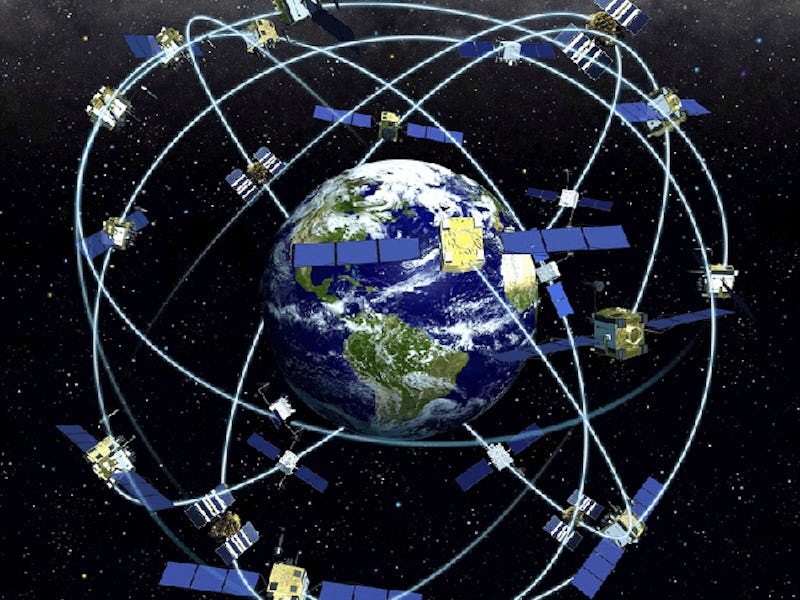Will Suicide Satellites Be Part of Space Warfare?
Recent events suggest is more likely than ever.

Warfare in outer space is almost inevitable. The question isn’t really if weapons in space will become commonplace, it’s what they’ll look like when they are. Hollywood has already offered us some action-packed theories, but missiles, projectile explosives, and high-powered lasers may remain the stuff of science fiction. Recent events suggest that “suicide satellites,” orbital battering rams more or less, will be — at least at first — the more appropriate ballistic for war above the worlds.
In fact, there is reason to believe that Russia is already moving in that direction. Putin’s boys recently launched satellites into low Earth orbit that seem to have the hallmarks of bumper cars. The Russian government claims that there’s nothing to worry about, but, well, they’ve said that before.
In a recent article for The Space Review, Brian Weeden, former officer in the U.S. Strategic Command’s Joint Space Operations Center, discussed in detail how one of the satellites, Cosmos-2504, was maneuvering back and forth in relation to a piece of debris called Briz-KM. This evidence suggests that the satellite was basically involved in a minor collision with the debris. In addition, Weeden describes how another satellite, Luch, ended up parking itself disconcertingly close to two U.S. Intelsat satellites.
Both events stoked fears that Russia was conducting military tests related to what’s called rendezvous and proximity operations — in which satellites approach other spacecraft for nefarious purposes, from hacking their target’s communications systems, to outright physically damaging or destroying them. Russia’s response, of course, was the political equivalent of saying “chill, bro.” There is no air space where there is no air, so the conversation (the public one anyway) ended there.
Why would any country prefer to use satellites as space weaponry over other technologies that are potentially more destructive and certainly more accurate? The answer, of course, is cost. If we’re talking about satellites attacking satellites, then pretty much any satellite that can move around is a potential weapon. Over 2,200 satellites are currently orbiting Earth, and many of them — Russian, U.S., Chinese, or otherwise — can move between orbits when needed. You don’t have to worry about all the costs that go into launching objects, like fuel and infrastructure. Your weapons are already in position — simply switch on the ‘attack’ mode and watch the Hulk-smash happen.
There are definitely reasons a country would say no to suicide satellites. In February 2009, two satellites — Iridium 33 and Cosmos 2251 — collided with one-another and essentially blasted each other to bits. Those pieces, however, stayed in orbit, and added to the catalog of millions of dangerous space junk pieces zooming around the earth at more than 22,000 miles per hour.
If more satellite collisions happen — accidental or intentional — Earth’s orbit would quickly turn into a wasteland, where pretty much any spacecraft not fitted with (currently non-existent) super-shielding would be destroyed within days or even hours. Worst case scenario: We say goodbye to using any technologies that rely on satellite systems to work (which these days pretty much amounts to everything).
But perhaps that might be the point. If a future conflict were to escalate badly enough, one country might go all Dr. Strangelove and use suicide satellites to take out all countries’ defense systems that rely on orbital technologies. If a country believes their backup technologies would suffice, they might pull that doomsday trigger and send the world back to 1940.
This is all pretty far-out speculation, but there’s no question we are inching closer to facing real conflicts in zero-gravity space. Orbital debris mitigation and remediation is already on the minds of many scientists and engineers, but space warfare would surely make all of those efforts for naught. The best thing we can do — experts and ordinary citizens alike — is keep a better watch on what exactly is happening up there, more than a hundred miles above the battlefields of the past.